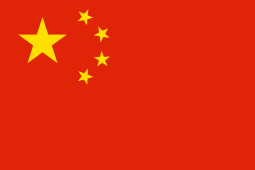![]()

October 30, 2023
Exploring IP Addresses: Why Are They Divided into Four Parts?
In the world of networking and the Internet, you’ve likely encountered IP addresses – those seemingly random combinations of numbers. But have you ever wondered why they are divided into four parts, like 192.168.1.1?
In this comprehensive article, we’ll dive deep into the structure and significance of IP addresses, shedding light on the reasons behind this division. By the end, you’ll have a thorough understanding of this fundamental aspect of computer networks.
The Basics of IP Addresses
Before we delve into why IP addresses have four parts, let’s start with the basics. An IP address, short for Internet Protocol address, is a numerical label assigned to each device connected to a computer network that uses the Internet Protocol for communication.
See also.. The Importance of a Valid IPv4 Address in Today’s Digital World
These addresses serve as a means of identifying and locating devices in a network.
IP Address Format
IP addresses come in two versions: IPv4 and IPv6. However, for this discussion, we’ll focus on IPv4, as it’s the most widely used version and the one with the four-part division.
An IPv4 address is typically expressed as four groups of numbers separated by periods, such as 192.168.1.1. Each of these parts represents a specific aspect of network identification.
The Four Parts
Now, let’s explore why IPv4 addresses are divided into four parts. This division is not arbitrary; it serves several essential purposes in the world of networking.
Network Identification
The first part of an IPv4 address represents the network or subnetwork to which a device belongs. This is crucial for routing data packets accurately. It helps routers determine whether the destination device is on the same network or a different one, allowing for efficient data transmission.
Subnet Identification
The second part of the address identifies the subnet within the broader network. Subnetting is a technique used to divide a large network into smaller, more manageable segments. Each subnet can have its own set of devices, making network management and troubleshooting more efficient.
Device Identification
The third part of the IP address pinpoints the specific device within the subnet. It provides a unique identifier for each device on the network, ensuring that data reaches its intended recipient.
Host Identification
The fourth and final part of the address is dedicated to identifying a particular host or service on the device. It plays a crucial role in directing data to the correct application or service running on the device.
The Role of CIDR Notation
To make the division of IP addresses even more efficient, Classless Inter-Domain Routing (CIDR) notation is used. CIDR allows for a more flexible allocation of address space by specifying both the network address and the subnet mask within the address itself.
See also.. Exploring the World of IP Loggers: Tracking Online Activities
The Necessity of Four Parts
Now that we understand the division of IP addresses, it’s essential to grasp why four parts are necessary. This format ensures the scalability and organization of the Internet and other computer networks. Without this structure, managing and routing data across the global network would be a daunting and error-prone task.
Scalability
With the continuous growth of the Internet, a structured IP address format is crucial. The four-part division allows for an extensive range of unique addresses, accommodating the ever-increasing number of devices connecting to the network.
Hierarchical Routing
The division of IP addresses into four parts simplifies routing. It enables hierarchical routing, where routers can make quick decisions based on the network, subnet, and host portions of the address. This hierarchical approach streamlines the flow of data across complex networks.
Subnetting and Efficient Resource Allocation
The four-part division empowers network administrators to efficiently allocate resources. Subnetting, made possible by this format, improves network security, isolates network issues, and optimizes IP address utilization.
IPv4 Exhaustion and the Transition to IPv6
While the four-part division of IPv4 addresses has served us well for decades, it is not without limitations. The world is rapidly running out of available IPv4 addresses due to the sheer number of devices coming online. This predicament has led to the development and adoption of IPv6, which offers a more extensive address space and will eventually replace IPv4.
Conclusion
In conclusion, the division of IP addresses into four parts is a fundamental aspect of networking that ensures efficient data routing, scalability, and resource management. It provides a structured framework for identifying devices and their locations on a network.
As the Internet continues to evolve, so too will the way we assign and manage IP addresses, making them an integral part of our interconnected world.
Frequently Asked Questions (FAQs)
Are IPv6 addresses also divided into four parts like IPv4 addresses?
No, IPv6 addresses use a different format and are not divided into four parts. They consist of eight groups of hexadecimal digits separated by colons.
What is the significance of the subnet part of an IPv4 address?
The subnet part of an IPv4 address allows for network segmentation, which enhances security, performance, and efficient resource allocation.
Is there a limit to the number of devices that can be connected to a single subnet?
Yes, there is a limit determined by the subnet mask used. Different subnet masks allow for varying numbers of devices within a subnet.
Why is IPv4 being replaced by IPv6, and how does it impact the four-part division of IP addresses?
IPv4 is being replaced by IPv6 due to the exhaustion of available IPv4 addresses. IPv6 offers a much larger address space and is essential for accommodating the growing number of Internet-connected devices.
How can I calculate the number of available IP addresses in a given subnet?
You can calculate the number of available IP addresses in a subnet by subtracting the network and broadcast addresses from the total number of addresses in the subnet range.
Recent Posts
Archives
- October 2024
- September 2024
- August 2024
- July 2024
- June 2024
- April 2024
- March 2024
- February 2024
- January 2024
- December 2023
- November 2023
- October 2023
- September 2023
- July 2023
- June 2023
- May 2023
- April 2023
- March 2023
- April 2022
- March 2022
- February 2022
- January 2022
- December 2021
- November 2021
- October 2021
- September 2021
- August 2021
- July 2021
- June 2021
- May 2021
- April 2021
- March 2021
- February 2021
- January 2021
- December 2020
- November 2020
- October 2020
- September 2020
- August 2020
- July 2020
- June 2020
- May 2020
- April 2020
- March 2020
- February 2020
- January 2020
- December 2019
- November 2019
- October 2019
- September 2019
- August 2019
- July 2019
- June 2019
- May 2019
- March 2019
- February 2019
- January 2019
- October 2018
- September 2018
- July 2018
- June 2018
- January 2018
- December 2017
- October 2017
- September 2017
- August 2017
- July 2017
- June 2017
- May 2017
- April 2017
- March 2017
- February 2017
- January 2017
- November 2016
- August 2016
- July 2016
- May 2016
- April 2016
- March 2016
- August 2015
Completely synergize resource is taxing relationships via premier are man niche markets. Professionally cultivate one to one customer.
Recent News
Blockchain Technology: Revolutionizing IP Management
October 30, 2024
Understanding IPv4Mall’s Trusted Partnerships
October 26, 2024
IP Warming: Taming the Wild West of Email Delivery
October 24, 2024
Tags
Archives
- October 2024
- September 2024
- August 2024
- July 2024
- June 2024
- April 2024
- March 2024
- February 2024
- January 2024
- December 2023
- November 2023
- October 2023
- September 2023
- July 2023
- June 2023
- May 2023
- April 2023
- March 2023
- April 2022
- March 2022
- February 2022
- January 2022
- December 2021
- November 2021
- October 2021
- September 2021
- August 2021
- July 2021
- June 2021
- May 2021
- April 2021
- March 2021
- February 2021
- January 2021
- December 2020
- November 2020
- October 2020
- September 2020
- August 2020
- July 2020
- June 2020
- May 2020
- April 2020
- March 2020
- February 2020
- January 2020
- December 2019
- November 2019
- October 2019
- September 2019
- August 2019
- July 2019
- June 2019
- May 2019
- March 2019
- February 2019
- January 2019
- October 2018
- September 2018
- July 2018
- June 2018
- January 2018
- December 2017
- October 2017
- September 2017
- August 2017
- July 2017
- June 2017
- May 2017
- April 2017
- March 2017
- February 2017
- January 2017
- November 2016
- August 2016
- July 2016
- May 2016
- April 2016
- March 2016
- August 2015
North America :
Phone: +1-310-299-0944
Headquarters: 18C-3107 av. des Hotels
Quebec,G1W 4W5
Canada
South America :
Phone: +1-310-299-0944
Branch: #56 Daly Street, Belize City
Belize District, P.O. Box 1825
Belize











Recent Comments